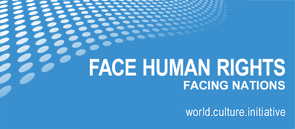Project
The General Assembly of the United Nations described the Universal Declaration
of Human Rights of 10 December 1948 as the common ideal of all peoples and all
nations, to the end that every individual and every organ of society shall strive by
teaching and education to promote respect for these rights and freedoms.
The cultural project “FACING NATIONS – culture of humanity” has made
commendable efforts to express and promote this ideal.
Painted with consideration and sensitivity, faces of people from UN member
states are the core of this exhibit. The idea of “giving nations a face” is not only an
interesting artistic approach to the issue of “human rights” but also a clear signal to
observe the Declaration.
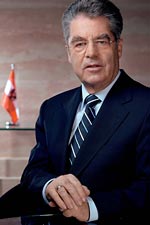
Dr. Heinz FISCHER
President of the Republic of Austria
Foto: PK
The Vienna International Centre’s 30th anniversary offers us an excellent occasion to celebrate. Austria is proud to host numerous important UN-organizations in Vienna. The International Atomic Energy Agency (IAEA), the United Nations Office at Vienna (UNOV), the UN Industrial Development Organisation (UNIDO), the UN Office on Drugs and Crime (UNODC), the Preparatory Commission for the Comprehensive Nuclear Test-Ban Treaty Organisation (CTBTO) and the UN Office for Outer Space Affairs (UNOOSA) rank among the most important organizations and offices to be hosted by Austria.
The Austrian Host Country Policy is a pillar of the Austrian Foreign Policy. Situated in the heart of Europe and throughout its history at the crossroads of different cultures, religions and political systems, Austria has developed a specific culture of dialogue, as well as an active participation in international organizations and multilateral diplomacy. As a host country, Austria appreciates the important role the international organizations based in Austria play in fostering Vienna as a platform for peace and dialogue.
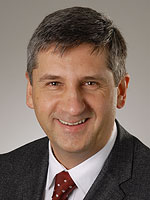
Dr. Michael SPINDELEGGER
Federal Minister for European and International Affairs
Foto: Außenministerium/Hopi-Media
The Vienna International Centre, situated on the River Danube, celebrates its 30th anniversary this year. It was inaugurated on 23 August 1979 and handed over to the international organizations. The striking building has since shaped the skyline of new and modern Vienna.
The international organizations based in Vienna have considerably contributed to Austria’s reputation. But what is even more important is the cultural aspect: The people who come from all around the world to work in the Vienna International Centre enrich our city and our society every day.
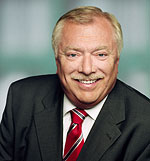
Dr. Michael HÄUPL
Mayor of Vienna
Foto: Stadt Wien/Fotograf Kurt Keinrath
The imaginative project “FACING NATIONS – culture of humanity” reflects the origin of the Universal Declaration of Human Rights more than 60 years ago. The very first right emphasized by the Declaration is the right to life – a right denied to tens of millions during the horrors of the Second World War.
During the same period, a new menace to life on Earth emerged: the looming threat of nuclear annihilation. The obliteration of Hiroshima and Nagasaki will always remain vivid in our minds. Today eight countries have conducted over 2000 nuclear tests in total and have amassed over 20,000 nuclear weapons, each one dwarfing the Hiroshima bomb in destructive power.
Working towards the elimination of these weapons is therefore a profound moral and humanitarian obligation. It gives me hope that in recent years, the vision of a nuclearweapon- free world has been embraced by an increasing number of international leaders.
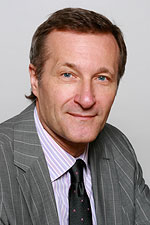
Tibor TÓTH
Executive Secretary, Preparatory Commission for the Comprehensive Nuclear-Test- Ban Treaty Organization (CTBTO)
Foto: CTBTO
The International Atomic Energy Agency was created in Vienna in 1957, four years after President Eisenhower called for the creation of an organization which would put nuclear science and technology at the service of mankind and ensure that nuclear energy is used exclusively for peaceful purposes.
After nearly 20 years in the Grand Hotel, the Agency took up residence in the Vienna International Centre in 1979. Our membership has grown steadily and now comprises 150 States.
Our dual security and development mandate is unique. The Agency is most associated in the public mind with our work to prevent the proliferation of nuclear weapons. But we do much more than that.
By making nuclear techniques available to developing countries, we help to improve access to food, water and health care for the poor. The IAEA’s nuclear safety standards have become the international benchmark and are being incorporated into European Union law. We have a significant nuclear security programme which has helped to reduce the likelihood of extremist groups getting hold of nuclear or radioactive material.
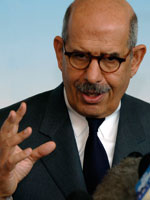
Mohamed ELBARADEI
Director-General, International Atomic Energy Agency (IAEA)
Foto: IAEA/IAEO
The world was a very different place thirty years ago, when the people of Vienna first peered up at these impossibly tall and futuristic buildings, giant arcs cupped together along the banks of the Danube. In those days, not many ventured much further beyond this side of the river. Indeed, the Vienna International Centre stood like a sentry post between competing groups of States and systems: from the highest of its twenty eight floors, the human eye could scan the line dividing East from West.
But this new construction was not born to cement division. On the contrary, it took the germ of an Austrian tradition of discussion, conciliation and mutual understanding that dates at least as far back as the Congress of Vienna in 1814, and breathed new life into it. It refused to accept that Vienna’s geographical position was peripheral, but rather defined it as a neutral space at the heart of the world. A new term rapidly gained currency in international relations: the “Vienna spirit”, a readiness to seek consensus that often evaded the efforts of those in other hubs of multilateral diplomacy.
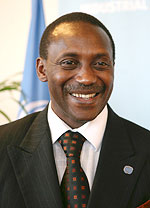
Kandeh K. YUMKELLA
Director-General, United Nations Industrial Development Organization (UNIDO)
Foto: UNIDO
For thirty years, since 1979, the United Nations has had its third Headquarters (after New York and Geneva) in the Austrian capital, situated in the landmark Vienna International Centre (VIC).
In the past three decades, the VIC has become an international hub for human security issues. The range and depth of expertise is a reflection of how the United Nations family in Vienna is well-positioned and well-equipped to deal with some of the world’s most salient challenges.
The Vienna International Centre also moves with the times. In this anniversary year, we celebrate the opening of a state-of-the-art conference facility, the “M” building. We are also intensifying our efforts to make the VIC more environmentally friendly by reducing the emission of greenhouse gases, recycling and reducing waste.
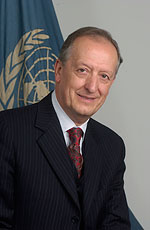
Antonio Maria COSTA
Director-General, United Nations Office at Vienna (UNOV)
Foto: UNOV/UNODC
When UNIS Vienna supported the launch of FACING NATIONS in December 2008 in Graz, we knew that this would be the beginning of an impressive and momentous journey. At that time, the exhibition was launched to celebrate the 60th Anniversary of the Universal Declaration of Human Rights, with which FACING NATIONS shares the basic message of dignity and human rights for all.
Building on the success achieved in Graz, we were certain that the exhibition
would be a great addition to the 30th anniversary of the Vienna International
Centre (VIC) and we are very grateful to all those who made it possible to bring
FACING NATIONS to the United Nations Headquarters in Vienna where more
than 4,000 people work and tens of thousands visit each year.
UN employees at the VIC are as diverse as those portrayed by artist Oskar Stocker. They come from over 110 countries and represent different cultures, ethnicities and beliefs– a microcosm of today’s world, just like the city of Graz where those you see in the 124 portraits of FACING NATIONS live. In the same way that FACING NATIONS reflects the shared humanity of its 124 subjects, the diversity of those working at the VIC strengthen our work towards the common goals of building a healthier, sustainable environment and a more secure, more prosperous and more just world.
The preamble of the UN Charter starts with the famous words “We the Peoples”. FACING NATIONS reminds us that these “Peoples” are not anonymous collective entities, but individuals, with individual aspirations, histories and identities. Yet we all share a common culture of humanity. The work of the United Nations is based on three pillars: peace and security, development and human rights. All three are equally important and interlinked, yet the focus is always on the peoples of this world, for whom and by whom the United Nations was created in 1945.
By exhibiting FACING NATIONS at the Headquarters of the United Nations in Vienna, the message contained therein will be carried not only into the Austrian capital, but further into the world, calling upon individuals and nations everywhere to respect human rights and to celebrate our diversity. This is only the second step in this exciting project’s journey which will hopefully span the globe with its message of a shared culture of humanity.
Maher NASSER
Director, United Nations Information Service Vienna (UNIS)
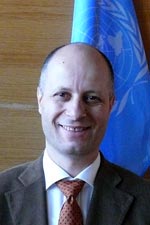
Dir. Maher NASSER
Director of the UN Information Service
Foto: UNIS
In 2008, 60 years after the signing of the Universal Declaration of Human Rights, the Austrian Broadcasting Corporation-Studio Styria reminded us of the origin of this UN Declaration of Human Rights with the unique artistic and cultural project “FACING NATIONS – culture of humanity” by the artist Oskar Stocker. On the occasion of the 30th anniversary of the Vienna International Centre, this impressive work is now on display in the nation’s capital.
The project “FACING NATIONS – culture of humanity” with portraits of 124
people from 124 nations is an impressive representation of cosmopolitanism,
internationalism, tolerance and humanity.
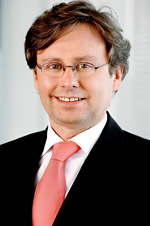
Dr. Alexander WRABETZ
General Manager, ORF (Austrian Broadcasting Corporation)
Foto: ORF/Ramsdorfer
“In my years with the UN, I have been fortunate enough to have worked on all continents and with many nations. This has enabled me to experience the vital role we play in each others lives, as countries, institutions, communities – and as individuals. In my personal life as well, rooted in Islam, Asia and the Middle East, married into the proud Austrian tradition of central Europe, and based in Vienna, I know what it means to integrate into a different world. It is not always easy, but it is possible, with goodwill and effort on the part of those who arrive and those who receive.
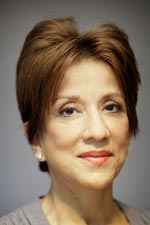
Nasra HASSAN
former Director of UN Information Service Vienna
The 60th anniversary of the signing of the Universal Declaration of Human Rights offers once again a reason to consider how well human rights have been put into practice. The state of Styria stands for the enforcement of human rights, without exception, and has, in this sense, implemented extensive actions within its own area of influence. Among others, these include the appointment of a variety of representatives as human rights observers, and also the presen-tation of the Human Rights Award of the State of Styria to persons who have rendered a ser-vice in maintaining or achieving human rights. In addition, accents are set on the implementa-tion and maintenance of human rights in other fields of activity, such as supporting projects for cooperative development.

Mag. Franz VOVES
Governor of Styria
FACING NATIONS is an exciting concept to make the correlation between artistic creation and human rights visible. The portraits of people with a migrant background show their face, and their inviolable personality. For those who – for whatever reason – have lost their home, we all too lightly also deny them their identity.
The cooperation of the artist Oskar Stocker with the ORF increases the chance that the socio-political message will be spread far and universally. High-ranking personalities have accepted patronage of the project. The success of this artistically and socially meaningful project is desirable, and certainly only a question of time. It proves the political power of artistic work and, conversely, the influence of the current political position of society on the artistic work taking place within it.
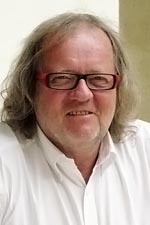
Dr. Kurt FLECKER
Deputy Governor of Styria
For eight years, the city of Graz has been the only city in Europe to be recognized as a “Human Rights City” and as such, it has been especially committed to fundamental human rights. This is one of the many reasons that is a special honour for us to experience the presentation of FACING NATIONS in the state capital of Styria. This project, which was initiated by ORF Styria in commemoration of the 60-year anniversary of the signing of the Universal Declaration of Human Rights, presents the spirit of the Declaration and its meaning for our society in a sensitive, ambitious manner.
People from over 150 nations live in Graz and influence and enrich the city through their various lives, nationalities and destinies, as well as their cultural and religious identities. A proverb says, “A face tells the story of a whole life!“. In FACING NATIONS, the oil portraits created by Oskar Stocker unite the faces and the variety of the world in an impressive work of art in our city. For Graz, this project is a great honour and an artistic monument to freedom, equality, tolerance, and respect!
Our special thanks are due to the artist, Oskar Stocker, and to all who contributed to the success of this project!
Mag. Siegfried NAGL, Mayor of Graz
Lisa RÜCKER, Vice-mayor of Graz
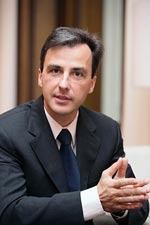
Mag. Siegfried NAGL
Mayor of Graz
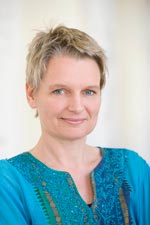
Lisa RÜCKER
Vice-mayor of Graz
Human dignity is the core concept of the Universal Declaration of Human Rights (UDHR), which celebrates its 60th anniversary on 10 December 2008. The preamble of the UDHR begins with the statement that, “recognition of the inherent dignity and of the equal and inalienable rights of all members of the human family is the foundation of freedom, justice and peace in the world …” and Article 1 determines that, “All human beings are born free and equal in dignity and rights. They are endowed with reason and conscience and should act towards one another in a spirit of brotherhood.”
Thanks to Oskar Stocker’s portraits, in fulfilment of an idea by Gerhard Draxler, this common human dignity of people of all nations living in Graz, and representative of people all over the world, was made visible. Human rights are violated everywhere – even in Graz, which, in 2001, declared itself to be a Human Rights City, thereby putting itself under the obligation to be guided in its dealings by the principle of human rights. Here in our city, these dealings are often not loud and spectacular, but are, instead, quiet and inconspicuous. Someone ends up in poverty and cannot be caught by the social net; children cannot learn enough German because there are not enough teachers; a man cannot find an apartment because his skin is the wrong colour; a woman cannot find work because she wears a scarf on her head … The list is easily continued. In autumn 2008, following the initiative of the Mayor of the city of Graz, Siegfried Nagl, the Human Rights Commission of Graz drew up a Human Rights Report for the first time. This report gives a good overview of the problems, but it also gives many examples of positive experiences.
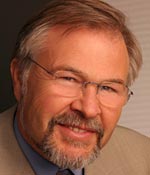
Univ.-Prof. Mag. Dr.
Dr. h.c. Wolfgang BENEDEK
Chairman of the Human Rights Commission of the city of Graz; Director of the European Trainings and Research Centre for Human Rights and Democracy; Professor of International Law at the University of Graz
Immigrants are an essential factor in the contact between cultures. Immigrants
enrich Graz. These are trivial comments, but they are true. Nevertheless, only very
few realize what it really means to be an immigrant. Immigration means that you had
to leave your home. Even if this was a voluntary decision and someone has become
well-established in Graz, a feeling of being torn apart often still exists for a long time.
For immigrants, extremely negative experiences and very positive experiences often
lievery close together.
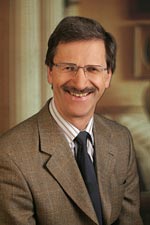
Univ.Prof.Dr.Max HALLER
Professor of Sociology at Karl Franzens University, Graz
To learn to form a nation, you hope, Germans, in vain.
Learn instead, you can, more freely to become humans.
Many may heartily agree with Schiller’s famous definition of the German national
character, imagining themselves to be literally on the safe side in the camp of
Humanity, while the concept of Nationality since Grillparzer has entered into an
unholy alliance with Bestiality. Even if they feel confirmed in this by the history of the
20th century, it must still be emphasized that this ethic will not take us far. Nations
have forfeited less of their historical importance – and its continued effect up to
the present day – than many are willing to accept.
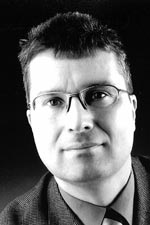
Dr. Ulrich BECKER
Director of the “Alte Galerie am Landesmuseum Joanneum”, Graz
Foto: Balsereit
eloquent proof of peaceful coexistence
For more than sixty years, the United Nations has devoted itself to the maintenance
of peace and international security, based on the recognition of the sovereign equality
of all peace-loving countries. In many cases, the UN has been successful in eradicating
threats to peace, preventing breaches of peace, and rectifying international disputes
by peaceful means, based on the principles of justice and of international law, as
formulated in their Charta.
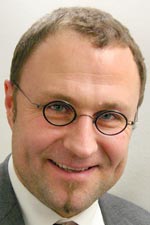
Mag. Guido SCHLIMBACH
Curator, Kunststation St. Peter Köln
Foto: privat
A dialogue.
Oskar Stocker talks with Peter Wolf

P: To paint a portrait of humanity – isn’t that a form of presumptuousness? You have to ask yourself, “Is there one face of humanity?“ The face is as different and as unique as the structure of DNA or as a fingerprint.
O: I think about this question a lot: Where is individuality and uniqueness clearly
recognizable? When has the border to uniformity or abstraction been reached –
or already crossed? Since you mentioned the fingerprint – at first glance, it is not
distinguishable and if what research says is true, then the DNA of all people is almost
identical, with only small differences. But still, each person is unique, one-of-a-kind
and distinctive. So the picture of humanity would be the sum of the pictures of all
humans who have ever lived – or at least of those who are alive today. As a painter,
I use the methods of the government agencies – no matter whether for a driver’s
license, passport or any other piece of identification – identification is made primarily
by the face.
P: And what does that mean for you as an artist – is that photo realism?
O: Definitely not. For me as an artist it means on the one hand, being true to the“surface”, the appearance – in other words, the face. And then, as a continuation to concentrate the layers which lie behind the face – the information which I ask about or which I feel – and to make them visible. At first, I was quite nervous about how those whose portraits I painted would react. In retrospect, I can see positive reactions. Several said that that is their true personality and identity. They obviously recognized themselves in their portraits.
P: You say that you could never draw a caricature but isn’t it the essence of a caricature to concentrate and strengthen that which is most important – to make visible information which lies beneath the surface?
O: That’s right. And I have great respect for those who can do this but for me, the danger would be too great to overdraw, to injure the person’s dignity. For me, it’s important to explain why I am a painter and not a photographer. Painting is a slow, gentle approach. A photograph is made in an instant but creating a portrait is a much slower process. I need more than half the painting time for the eyes and the mouth – this magic triangle.
P: Is the portrait only created during the painting, or does it already begin with the meeting of the model?
O: Both. The picture arises from the meeting with the model. The portrait then
becomes more concentrated by means of the sketches, by thinking about it while
painting, and the creative process then ends – and this is very important – with the
background.
A background can be flat, thin, hardly noticeable. A background as the concentrated
story of origin, life, socialization, traumas, etc. can consist of up to 17 painted layers.
It might sometimes even splash into the face – this is not carelessness.
P: But then the background can actually only be clearly interpreted by the painter, by you…
O: Actually, that’s right.
P: That reminds me of an anecdote. It’s a story from the 16th century: A rich man orders a painting of a nude from a painter – a painting of a girl lying in bed. When the painting is finished, he is very satisfied, but he asks the painter to paint an opaque green curtain in front of the bed. The painter says that he could make a real curtain that the man could open and close as often as he wanted, but the customer insists on the painted curtain. It is enough for him to know what is behind the curtain and this has a double meaning – on the one hand, it’s enough that he knows and on the other hand there’s the exclusivity that he alone knows. 1)
O: If the story is true, then that was then the first step toward abstraction, toward the painting of colored areas. I recently saw an exhibit which you reported on and I noticed that we have something strongly in common – to give a concentrated report in two minutes is not unlike my painting. Someone can sit there for two days and talk to you, but you then have to concentrate it in a painting.
P: The entire work FACING NATIONS is a political statement. Is painting, or can it be, a political act?
O: Yes. That is the first article of the Declaration of Human Rights (he reads):“All human beings are born free and equal in dignity and rights. They are endowed with reason and conscience and should act towards one another in a spirit of brotherhood.”
All 124 portraits hang at the same eye level. All people are free and equal next to one another – no matter whether Russia is next to Venezuela or Italy next to China. That is a political statement, a vision, a model, instructions for dealings – that all people can meet one another peaceably at the same eye level. That all money which is spent for war, arms, ammunition, etc. is superfluous. In this context, for me, the term nation is questionable. I understand that it is needed to make distinctions – we Bosnians, we Austrians, etc. And then that continues with the religions. It only represents the finding of identity. Each person feels love, mourning, joy, etc. My picture can also be considered to be a political statement, since I give each person the same place and space. The person is placed in the foreground and not the nation, the power, or something else. The project FACING NATIONS is an exciting trip around the world – a journey of discovery – but also a game. We created an international citizenry…
P: An international citizenry – that gives the word, “citizen of the world” a new dimension.
O: A good new word. Unfortunately also because in the 21st century there may be more slaves than citizens.
P: But something still bothers me when you say that Venezuela can be next to Russia or Iceland next to the Congo – you determined the placement of the pictures.
O: That was entirely random.
P: So, does the present order have a meaning or no meaning?
O: The order has no meaning. It is not alphabetical, not arranged according to G8 or G20, nor according to first, second, third world … That also creates a common ground, once again, that emphasizes the principal: All are equal.
P: Angelika Vauti, the head of the cultural service organization of Styria (Kultur Service Gesellschaft Steiermark), who used to be the Director of the Afro-Asian Institute, avoids using the term tolerance, because, for her, it contradicts the principal of equality, of the same eye level: When I say that I am tolerant of people of a different skin color, race, religion or whatever, then that means that I only tolerate him – I don’t recognize him as an equal. The term contains a certain arrogance and condescension.
O: She’s right, if you understand tolerance in this way, then that is inhuman. It doesn’t
have anything to do with understanding or with curiosity. If this is the principle, then
my picture will remain purely utopian, a vision.
Oskar STOCKER, ORF Artist in Residence, www.oskarstocker.com
Peter Wolf, Head of Cultural Programming, ORF (Austrian Broadcasting Corporation)-Styria
1) Schumanns Nachtbüchlein 1559, quoted from “Deutsches Anekdotenbuch”, edited
by Paul Alverdes and Hermann Rinn, dtv, 1962
